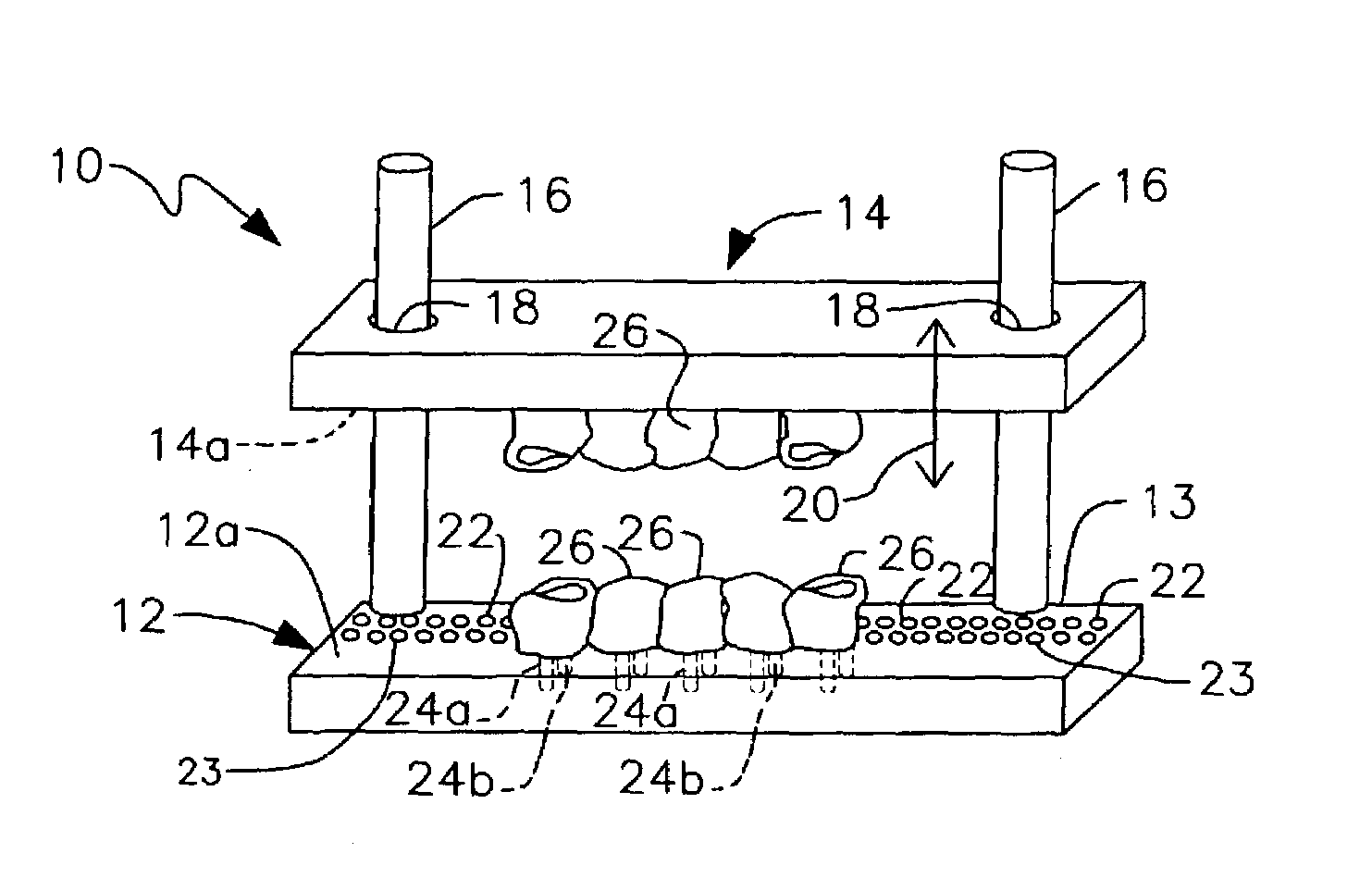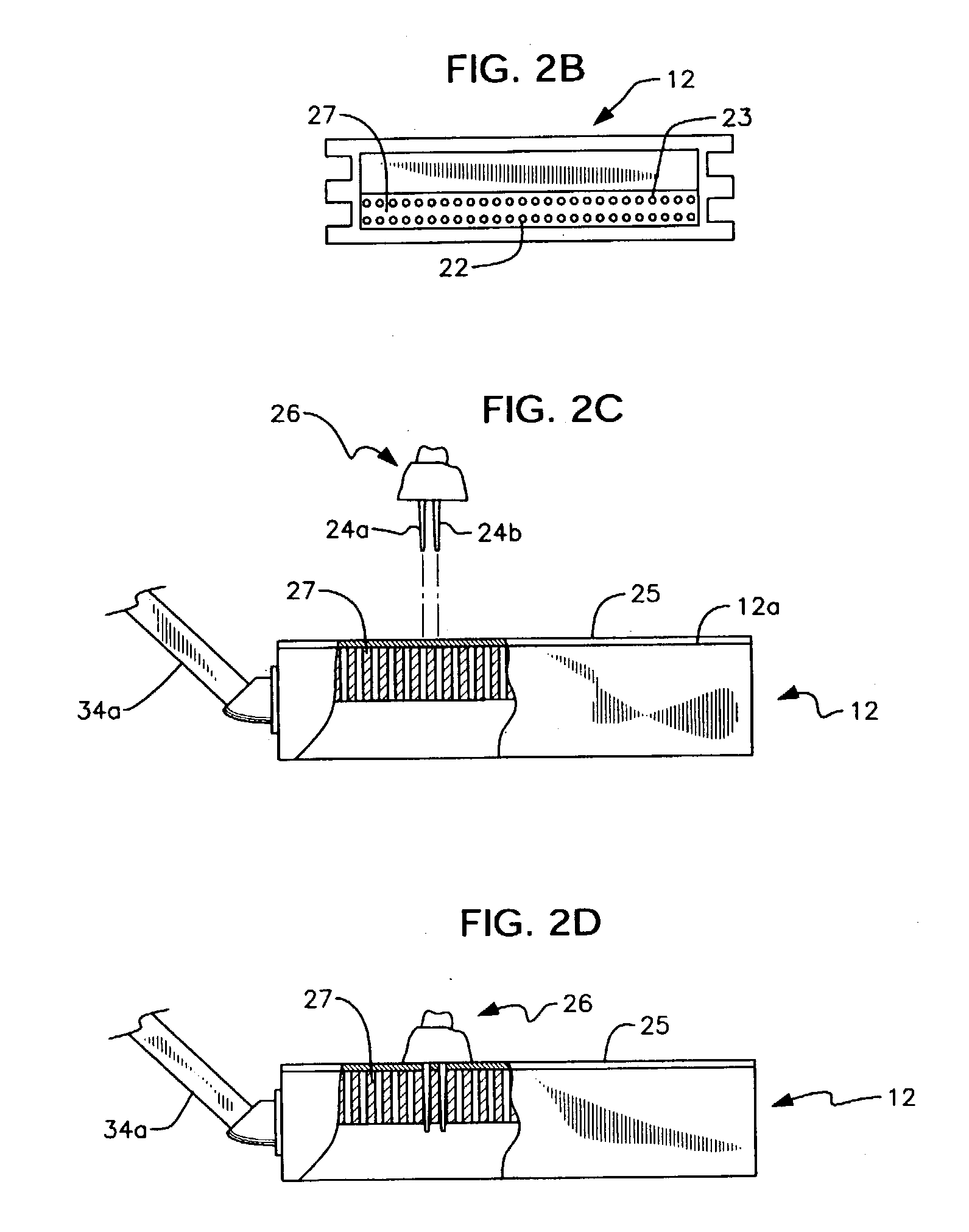Two-piece model and die system
a model and die technology, applied in the field of dental care, can solve the problems of reducing the skill level of dentists, affecting the patient's comfort, and the patient's inability to wear crown or dentures, so as to reduce the time required and lower the skill level
- Summary
- Abstract
- Description
- Claims
- Application Information
AI Technical Summary
Benefits of technology
Problems solved by technology
Method used
Image
Examples
first embodiment
[0057]novel system 10 includes a working base or quadrant 12 and an opposing top member or opposing quadrant 14 having essentially the same structure as working quadrant 12. More particularly, working quadrant 12 and opposing quadrant 14 share a generally straight, parallelepiped configuration having a predetermined length, width, and height.
[0058]Working quadrant 12 has a flat upper surface 12a and opposing quadrant 14 has a flat lower surface 14a. Flat upper surface 12a is disposed in confronting relation to lower flat surface 14a.
[0059]In a first embodiment, a pair of upstanding guideposts, collectively denoted 16, interconnects working quadrant 12 and opposing quadrant 14. The respective lowermost ends of guideposts 16 are secured to working quadrant 12 by any suitable means, near opposite ends thereof. Two longitudinally spaced apart throughbores 18 are formed in opposing quadrant 14 to slidingly receive said posts so that opposing quadrant 14 may be easily moved toward or awa...
third embodiment
[0079]FIGS. 8A, 8B, and 8C depict a third embodiment where a working base 50 has the same structure as working quadrant 12 but is semicircular in configuration. As such, it represents a full lower set of teeth and not just a quadrant as in the first two embodiments. Opposing top member 52 also has the same structure as opposing quadrant 14 in all respects except that said opposing top member is semicircular and represents a full set of upper teeth and not just a quadrant as in the first two embodiments. The same reference numerals are used in view of the common structure of the three embodiments.
[0080]The novel structure thus removes much of the guesswork associated with prior art techniques. Thus, the level of skill required to make a good set of model teeth is substantially reduced. Much less time is required as well. A lab equipped with the novel system will also become known for its consistency and reliability. Moreover, patient complaints about ill-fitting crowns and dentures w...
PUM
 Login to View More
Login to View More Abstract
Description
Claims
Application Information
 Login to View More
Login to View More - R&D
- Intellectual Property
- Life Sciences
- Materials
- Tech Scout
- Unparalleled Data Quality
- Higher Quality Content
- 60% Fewer Hallucinations
Browse by: Latest US Patents, China's latest patents, Technical Efficacy Thesaurus, Application Domain, Technology Topic, Popular Technical Reports.
© 2025 PatSnap. All rights reserved.Legal|Privacy policy|Modern Slavery Act Transparency Statement|Sitemap|About US| Contact US: help@patsnap.com



